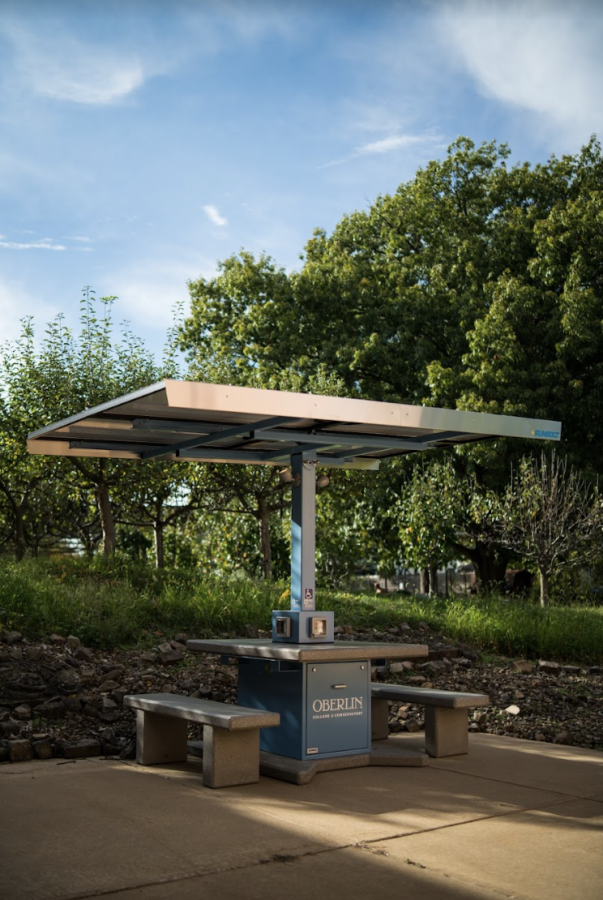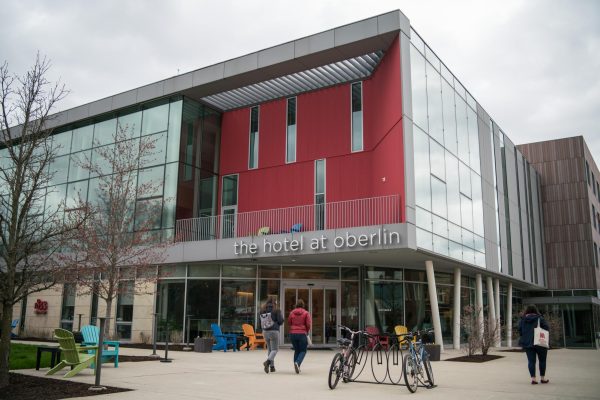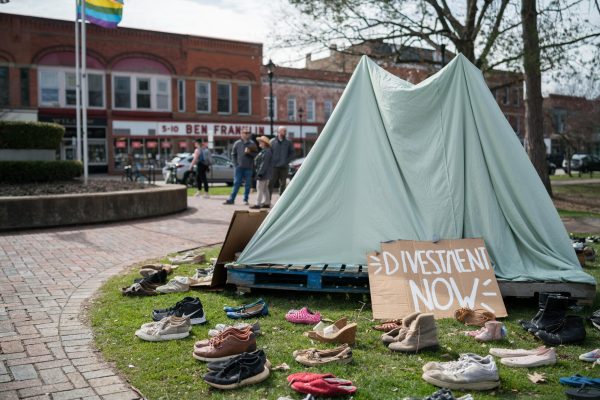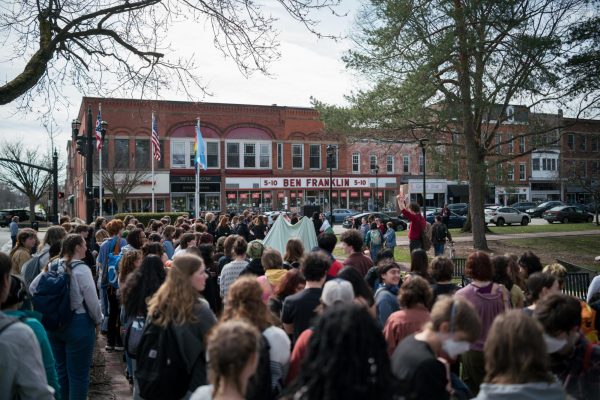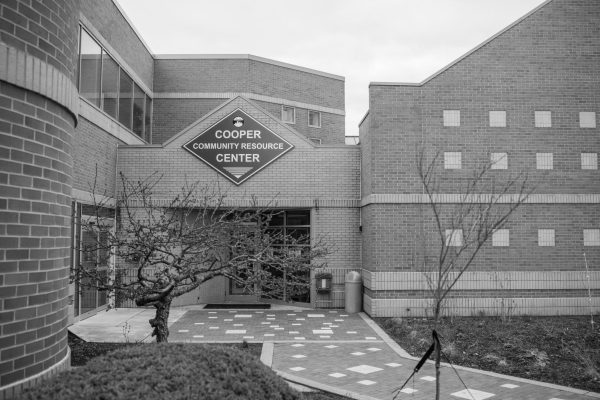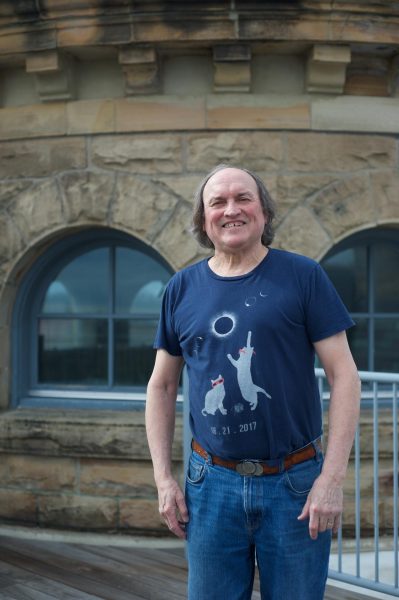Green EDGE Fund Installs Solar-Powered Outdoor Workstation
Over the summer, the College assisted the Green EDGE Fund in creating a solar-powered charging and Wi-Fi station.
This summer, after more than a year of planning, the College’s Green EDGE Fund installed a solar-powered outdoor working station complete with charging ports, LED lights, and Wi-Fi connection that is now available to students, faculty, and community members.
Located outside the northern entrance to the Adam Joseph Lewis Center for Environmental Studies, the workstation is equipped with six 120V outlets, five dual-port USB/USB-C outlets, and two Qi Wireless Chargers. It also employs LED lighting for nighttime use and connects to the College’s public Wi-Fi to boost the signal for users.
The workstation project was originally proposed by Justin Lee, OC ’22, a former member of the Green EDGE Fund board. Over the summer semester of 2021, when students were on campus but primarily attending classes virtually, Lee noticed that many students faced difficulties doing online schoolwork outside.
“Ohio in the summer is beautiful, so I’d seen a lot of students outside doing work over the summer semester,” Lee said. “[There were] a lot of frustrations coming from the students, whether it be the lack of internet or really shoddy internet connections — especially in Wilder Bowl — and if you had to charge your laptop, you had to go back inside.”
Over the same summer semester, the Green EDGE Fund had also been working with community members to brainstorm potential new structures and spaces across campus that would serve as shared spaces where students and community members could interact in order to strengthen town-gown relations.
Lee’s workstation proposal served as a solution to both problems, and Lee worked with the Green EDGE Fund board as well as Facilities Operations to initiate the project.
“The Green EDGE Fund took it one step further and asked ‘How can we incorporate sustainability into this? How can we also tackle other problems that we’ve been having?’” Lee said.
Sionainn Rudek, College fourth-year and current chair of the Green EDGE Fund board, was involved with the approval and research process of the workstation project. They noted that the project proposal was well-received by students and College staff.
“I think that it was met with a lot of positivity with everyone involved, so it kind of got pushed along really fast, which was great,” Rudek said.
Ben Hobbs, AJLC facilities manager and community outreach coordinator, also participated in the planning of the workstation, particularly when it came to finalizing the station’s location.
“I worked with Becky Bode of Grounds [Service] to determine the best location that would also allow for delivery and enough sun to keep the batteries charged,” Hobbs wrote in an email to the Review. “Originally, I had hoped that somewhere with a wide open, south facing location on Wilder Bowl would be the best location, but those spaces would have impeded access and were rejected as initial sites.”
Lee mentioned wanting the location of the table to be more central to campus to increase accessibility. According to Rudek, however, the table is still getting plenty of use at its current location.
“I’ve only walked by it a couple times, but every time I’ve walked by, somebody’s been sitting at it,” Rudek said. “It’s been faculty members, a student and another student, so it’s already been a group of different people using it, which is really amazing to me.”
In addition to serving as a functional workstation, Lee explained that the workstation is an important structure on campus to shape students’ view of sustainability at the College, especially when considered within the context of the four-year Sustainable Infrastructure Project.
“While the [SIP] is a great thing, it’s very underground,” Lee said. “Nothing that you see there is visible or tangible. We also wanted to provide something … that you can interact with, something that is tangible for students to use, … and we decided to do that through a solar table. They can charge their devices on all renewable energy, which I think is pretty nifty.”
According to Hobbs, if the workstation is popular, there’s a chance that Facilities will install more across the campus.
“[Bode] … is evaluating their use as well as the ease of ordering, delivery, branding, and how they are received by the campus community to decide how many more to purchase and place around campus,” Hobbs said. “If it is popular, I’d expect to see more soon.”
Although Lee graduated before the workstation was officially installed, he emphasized how much he learned from working with the Green EDGE Fund Board in the project’s planning process.
“[Installing the table] was a great learning experience, and I hope that it inspires other students to realize that if they wanted to do a sustainable project, the Green EDGE Fund is a huge resource,” Lee said. “That table was just a dream of me and a community member, and we made it a reality.”
The Green EDGE Fund is currently accepting applications for future sustainability projects. In particular, the board is encouraging applications for non-traditional and interdisciplinary approaches to sustainability.


